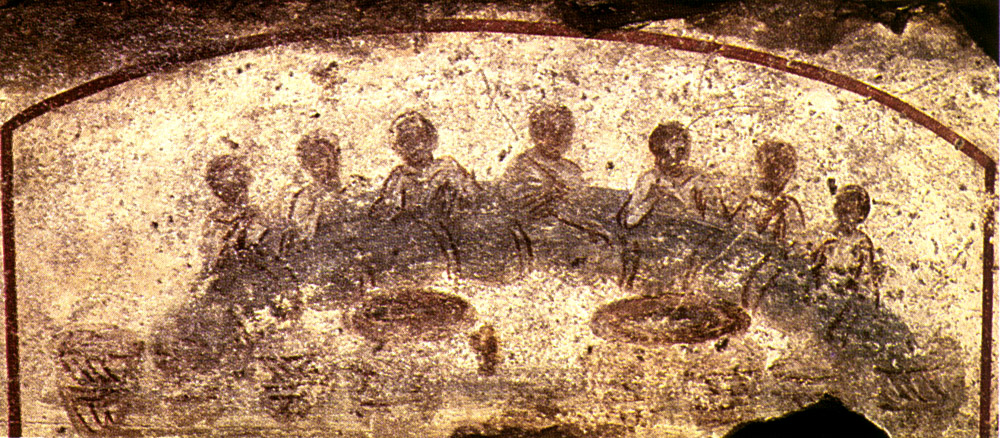Eucharistic Banquet

3rd century
Catacomb of Saint Callistus
The Catacomb of Callistus has special significance for the earliest stages of Christian iconography because the images were supervised by church officials of the 3rd century and can be considered reflective of theological emphases of the time (Jensen, Face to Face, 2). This banquet scene is the central image on the back wall of the "Cubicle of the Sacraments." The baskets and fish refer to the miracle of the multiplication of loaves and fishes, narrated in John 6:1-15 and interpreted by Jesus as a sign of himself as the "bread of life" (6:22-40). The table then refers to the Last Supper, at which Jesus said of the bread, "This is my Body" (Luke 22:19, Mark 14:22, Matthew 26:26). The Eucharistic significance of this image is mirrored by the those on the left (a priest performing the
epiclesis
the part of the Eucharistic Prayer in which the priest invokes God's blessing on the bread and wine
while a worshipper stands
orant)
praying with hands raised and palms out
and right (Abraham's sacrifice of Isaac, considered a foreshadowing of the Eucharist).
Read more about images of the Last Supper.
Read more about images of Abraham and Isaac.
Source: this page at Wikimedia Commons.